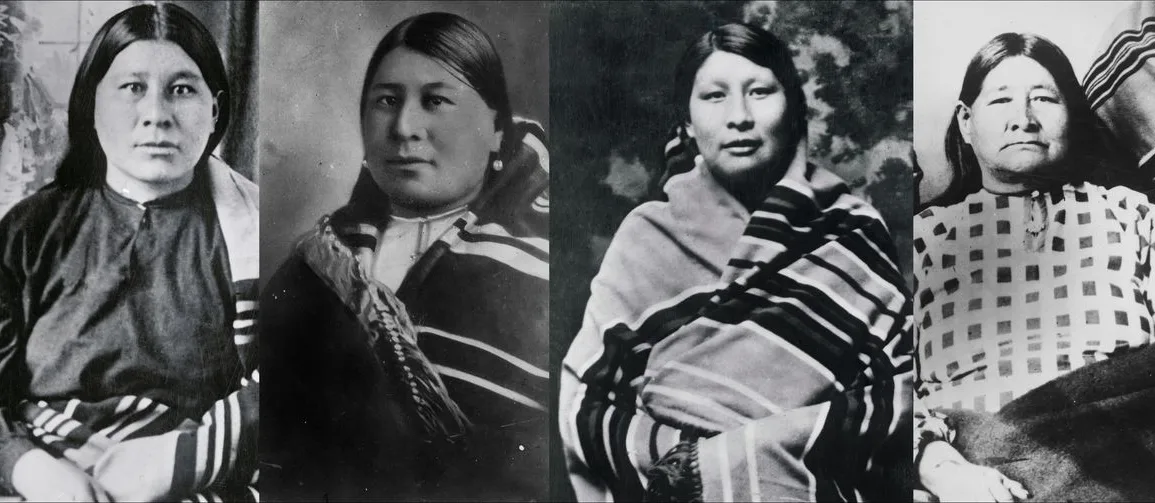The neighborhood dogs had all begun to die, and that was why Rita Smith’s husband was sure they’d be next.
Rita was one of the few remaining members of the Osage Nation following nearly a century of brutal displacement. Throughout the 19th century, the government repeatedly forced the Osage to relocate from their current lands in Kansas to, finally, a much smaller, desolate reservation in northern Oklahoma. With the discovery of oil on Osage land in the late 1890s, however, the 2,229 tribe members who were left suddenly came into tremendous amounts of personal wealth, and prosperity finally seemed to be once more within the community’s grasp. But now, a ring of unknown murderers had begun to target members of the tribe — including Rita’s family.
Between 1921 and 1923, Rita’s sister Anna Brown, her cousin, and possibly even her mother, Lizzie Kyle, had all died suspiciously alongside a string of other deaths — at least 24 Osage Nation members and several of their allies. Some, like Anna, had been killed with a bullet to the back of the head; others, like Lizzie, had apparently died from strychnine or other more obscure poisons. There were even rumors that Rita’s white husband, Bill, had killed his first wife, Rita’s sister Minnie, a few years earlier. He had married Rita shortly after. Rita’s other sister, Mollie, had also married a white man, Ernest Burkhart, the nephew of a rich and influential rancher, William Hale. Under Hale’s patronage, the family had prospered — but now they were dying, one by one.
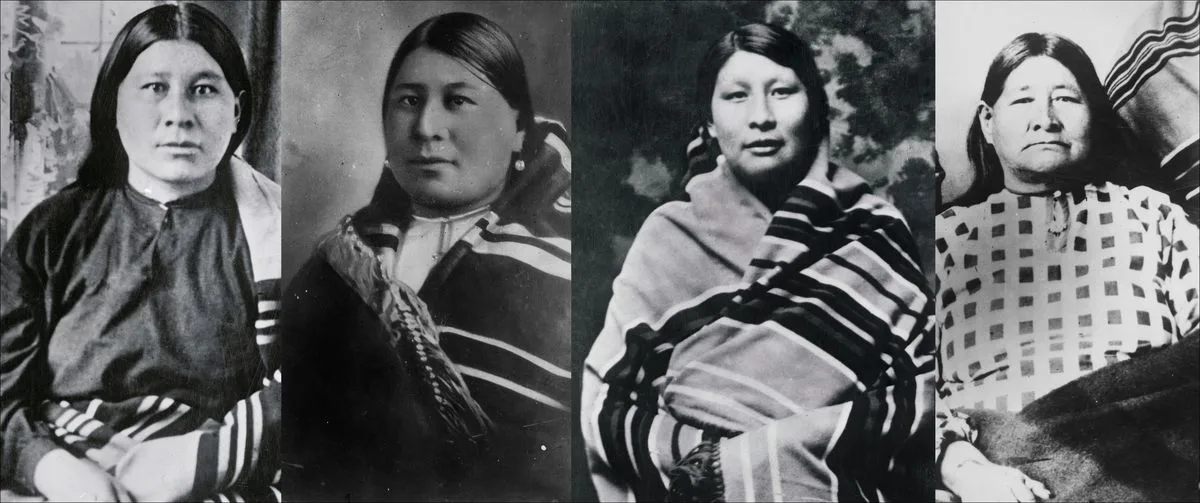
Rita and Bill had become so spooked by the possibility that they were next on the list of vigilante killings that after hearing intruders on their property, they’d moved to a safer part of town. Not long after they settled in, however, the neighborhood’s ever-vigilant dogs began to die, and Bill grew increasingly paranoid. He saw their silencing as akin to disabling an alarm system — and a sign that despite their best efforts, the anonymous death-dealers were inching closer to them.
He was right.
In the early morning hours of March 10, 1923, Bill, Rita, and their housekeeper Nettie Brookshire all died when a bomb that had been planted beneath their house exploded — yet another tragedy of what became known as the Osage Reign of Terror.
All of these events, and the harrowing FBI investigation that followed, form the subject of Killers of the Flower Moon, journalist David Grann’s meticulously researched 2017 book about the murders, as well as its highly anticipated upcoming film adaptation by Martin Scorsese. The film boasts many Indigenous actors, including breakout star Lily Gladstone, alongside an A-list ensemble including familiar Scorsese collaborators like Leonardo DiCaprio and Robert De Niro — and a somewhat quizzical range of famous singer-songwriters. The formidable cast size reflects just how far-reaching and convoluted the real murders and the efforts to solve them were.
As with all true crime, the ethics of discussing Killers of the Flower Moon as a narrative are tricky. Grann constructs his nonfiction account like a classic murder mystery, with a series of grim “twists” that may or may not be genuinely shocking, depending on how cynical you are. As the trailers make clear, Scorsese upends this narrative, with the “who” behind the Osage murders being not nearly as compelling as the why and the how. Still, if you’d like to avoid spoilers, proceed with caution (and maybe tap out before the last section).
While Scorsese takes the “who” as a given, the deep irony remains that the only reason the “why” might still shock viewers is that the Osage Reign of Terror simply isn’t well enough known. The systematic murders of an Indigenous community — the rare case to warrant a federal investigation from the then-nascent bureau that would become the FBI — may have been an undeniable media sensation in their day. Yet nearly 100 years later, the Osage murders wound up being little more than a 20th-century history footnote. (A date-stamped search for the murders returns less than 100 results on Google prior to 2016, the year before Flower Moon was published.)




Erased alongside the murders, arguably a 20th-century genocide on American soil, were the appalling circumstances that enabled them. Not only were the investigations into the murders hampered by systemic indifference, but the murders could arguably only have happened because of decades of blatant system-wide racism that forced the Osage people to fight for their autonomy. At the time the murders began, they were even fighting for control of their own finances and assets, thanks to a Britney-style conservatorship that robbed them of access to their newfound oil wealth amid an environment of galling corruption. This story, the true American horror story of a community enduring a death wave for over a decade, makes for harrowing drama.
But the full truth of the Osage murders, and the dehumanization at their root, makes it almost more unbelievable that they were ever solved at all — if, indeed, they actually were.
How the Osage got unfathomably rich — and the exploitative conservatorships that came with that money
For thousands of years, the Osage Nation resided on a vast stretch of territory that extended from the Ohio River across the Mississippi and into Oklahoma and across southern Kansas. In the 19th century, however, as white settlers encroached on their territory and anti-Indigenous sentiment flourished, the US government began a series of forced relocations, resettling the Osage repeatedly until finally, by the 1870s, the government forced the Osage to relocate to northern Oklahoma. The government had intentionally resettled the Osage to some of the worst farmland in Oklahoma — only to accidentally relocate them to the richest oil deposits in the country. In the late 1890s, the oil reserves were discovered, and the Osage people suddenly came into possession of confounding amounts of wealth, abruptly becoming the richest community on the planet.
And then, as they had so often before, the vultures began circling.
The massive land rush that followed the discovery of the oil swelled the prairie with grifters, grafters, scammers, and quick-buck seekers, all of whom arrived with the goal of exploiting the Indigenous people and their newfound wealth. Tribal allotments established between 1905 and 1907 meant that all of the existing Osage land was legally reserved to the remaining tribal members. But outsiders could still obtain leases to mine and drill the land in exchange for a share of the profits. At the peak of the oil rush in the 1920s, auctions for oil leases regularly generated millions of dollars. Outsiders could also marry into Osage families, which would allow them to access Osage money.
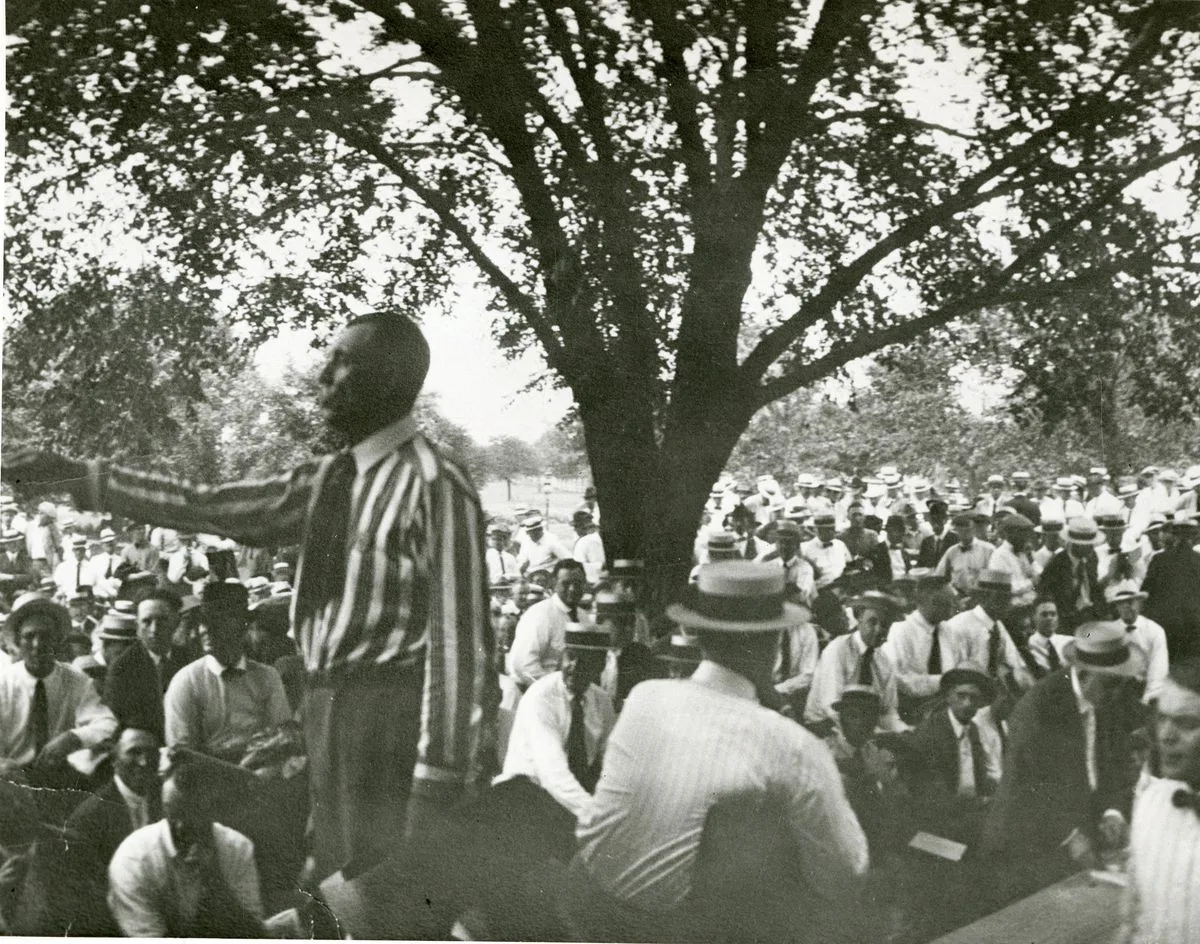



As white fortune hunters flocked to the countryside hoping to secure deals and access to the land, the government, via the Bureau of Indian Affairs, mandated that nearly all members of the Osage be appointed a white “guardian” who would manage (control) their money for them. Members of the tribe had to get permission to access their own bank accounts, have their purchases approved, withdraw their own money — nearly always with entirely racist assumptions embedded in the judgments about which Osage “deserved” to have access to their own money. It was in effect exactly like a modern-day conservatorship, with all of the built-in potential for exploitation that has given the legal structure its still-terrible reputation. The system often resulted in guardians simply withholding or stealing the money completely from the Osage, who rarely had a means of redress within the US legal system because of the conscious indifference or racism of local, state, and federal authorities.
“I have a diploma from Lawrence, and they’ve put a guardian over me,” an Osage tribe member named John Goodskin told Harper’s Monthly in November 1920. “I fought in France for this country, and yet I am not allowed even to sign my own checks … I’m a prisoner in this place.”
To understand how the eventual string of murders could have gone unchecked for so long, it’s vital to understand both how exploitative the guardianship system was and how the community revolved around it. White community members sought oil leases and then through guardianship gained further control over the Osage. In order to make this system work, you needed people who were willing to exploit the Osage as their guardians and people who were willing to look the other way while they did it, often in exchange for bribes or access of their own. This meant you needed people within every part of the social and legal system. “They have all the law and all the machinery on their side,” Goodskin told Harper’s.
Thus an entire ecosystem of greed and graft quickly arose around the Osage capital of Pawhuska and neighboring Osage city of Fairfax, keeping the money flowing and keeping the white locals, including the newcomers, in control of it. “Many of the county courts are influenced by political considerations, and … Indian guardianships are the plums to be distributed to the faithful friends of the judges as a reward for their support at the polls,” wrote Indigenous activist Zitkala-S̈a in 1924. Once established, the entire white community became incentivized to participate in this system of greed. And once the Osage citizens began dying, it was in the white locals’ best economic interests to let them keep dying.
That’s because of how the law concerning the Osage Nation’s shares in the oil fields, known as their headrights, worked. It was illegal for the headrights, the Osages’ most valuable asset, to be sold or given away. But if any member of the Osage Nation died, their headright would pass to their legal heir. This person might be their white spouse, who was often conveniently also their guardian. Or the headright might go to a relative or heir whose guardian already had complete control over their accounts — so that the money would effectively go straight to them.
In other words, marrying an Osage who then died, or being appointed guardian over an Osage who suddenly came into an inheritance after someone else died, was the only way for a white man to gain more access to the profits from all that oil. The law concerning the inviolability of Osage headrights, intended to make them less vulnerable to exploitation, instead meant that to their corrupt guardians, the Osage were more valuable dead than alive.
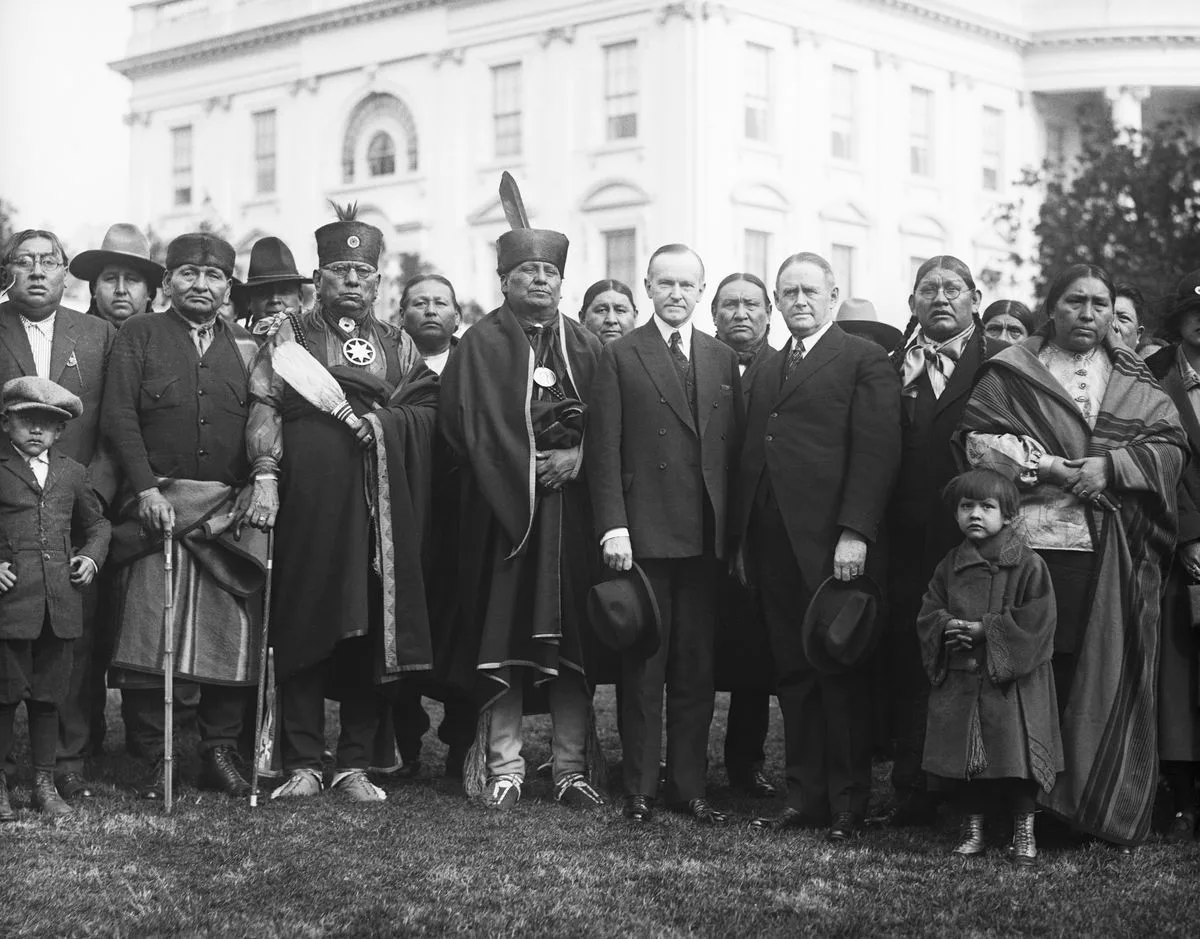



And thanks to the lure of the oil fields, corruption was everywhere. It ran so rampant in the region that, according to FBI records accessed by Grann in Flower Moon, when one of the killers was finally apprehended, he referred to the murders as simply “the state of the game.”
It became so unchecked that in 1923, the Osage Nation formally requested that the federal government take over the investigation into the Reign of Terror because there seemed to be no hope for justice from anywhere else.
The Osage murders became so prolific that the nation’s first federal investigative agency had to get involved
Until that point, the state’s attempts to investigate had gone completely off the rails. Local law enforcement had been, at best, thoroughly intimidated into totally halting their investigations. The best efforts at solving the crimes had been waged by cadres of private investigators working for the families of the victims. Thus far, however, leads had gone nowhere, evidence had mysteriously vanished, plausible theories turned out to be rumors without substance, the region’s unbridled corruption tainted the available case information, witnesses abruptly vanished or stopped talking, and everyone who seemed to be getting somewhere turned up dead.
As alarm and hysteria about the deaths spread, a white man named Barney McBride traveled to Washington, DC, to seek federal help in solving the murders. While there, he was attacked, beaten, and fatally stabbed more than 20 times. Three other investigators similarly died by foul play just as they seemed to be getting close to the truth: One was drugged and pushed down a flight of stairs; another was gunned down; the third, a local prosecutor, was thrown from a train while reportedly on his way to reveal the killers’ identities.
The bombing of the Smith house, however, brought about a turning point in the murder investigation. The high death toll, as well as the sheer menace involved in a triple-homicide house bombing, finally garnered the attention of national media and prompted the intervention of the federal government and the Bureau of Investigation, the fledgling organization that would ultimately become the FBI.
The bureau detectives, led by Tom White, a former Texas Ranger turned bureau veteran, had the herculean task of sorting through a landscape of rumors and misinformation and finding people — anyone — who was a) willing to tell the truth and b) not already dead. No sooner would one lead appear than it would turn out that the lead had already been killed, often under awfully convenient circumstances. Yet working mostly undercover, White and his detectives quickly gained a hypothesis of the murders — a truly chilling conspiracy to kill that led back to the family at the heart of it all.
Note: From here on, we will discuss the real-life criminals behind the Osage murders, whose identities constitute major spoilers for both the book and the film Killers of the Flower Moon. If you want to remain unspoiled for either, you should stop reading now.
The “who” of this whodunnit is almost as shocking as the “why”
It’s a testament to how unproductive the local justice system had been in its efforts to bring the Osage killers to rights that when the FBI took over in the summer of 1925, it only took White and his men three months to find real answers. Those three months, however, were spent unearthing a devastatingly large community plot to orchestrate the murders of Osage tribe members. This plot was either enacted, enabled, or silently complied with by apparently dozens of members of Fairfax’s white society — everyone from judges to pastors to coroners to private detectives to a range of henchmen.
At the center of all of it was a single man: William K. Hale, a self-made Fairfax cattle rancher who spent decades steadily amassing power and land in a There Will Be Blood-style saga of bribes, intimidation, murder, and ruthlessness. Hale did all of this while cloaking himself in a public disguise of gentility and charity; he called himself “the Reverend” and was known for lavishly donating to charity and constantly working on behalf of the Osage people.
But Hale also steadily took control over nearly every part of the social and legal systems of the region: He gained an appointment as a deputy sheriff, which meant he could come and go in jails at will and could easily manipulate criminals to work for him from behind bars. He had local officials in his pocket, openly terrified to disobey him. Even doctors in the area apparently aided him in discreetly poisoning their patients on his behalf. Hale “had everything fixed from the road-overseer to the governor,” Hale’s nephew stated in a deposition.
His ultimate goal, carried out via a string of brazen insurance scams, murder plots, for-hire killings, and fraud, was to amass his fortune by taking it from the Osage people. (This revelation comes as a shock in Grann’s retelling of the murder investigation; one might argue that Scorsese’s choice to cast Robert DeNiro as Hale in the film adaptation gives away the game upfront.)
What Tom White and his agents were able to prove centers around the Osage family that Bill Smith married into, which is also the family that Hale’s nephew, Ernest Burkhart, married into. It’s unclear how early Hale’s grand design took form, but what it ultimately coalesced into was this: systematically killing off all of Burkhart’s in-laws until all of their inheritances had passed on to Burkhart’s wife, Mollie. (In Scorsese’s film, Mollie is played by breakout star Gladstone, with DiCaprio in the role of Ernest.)
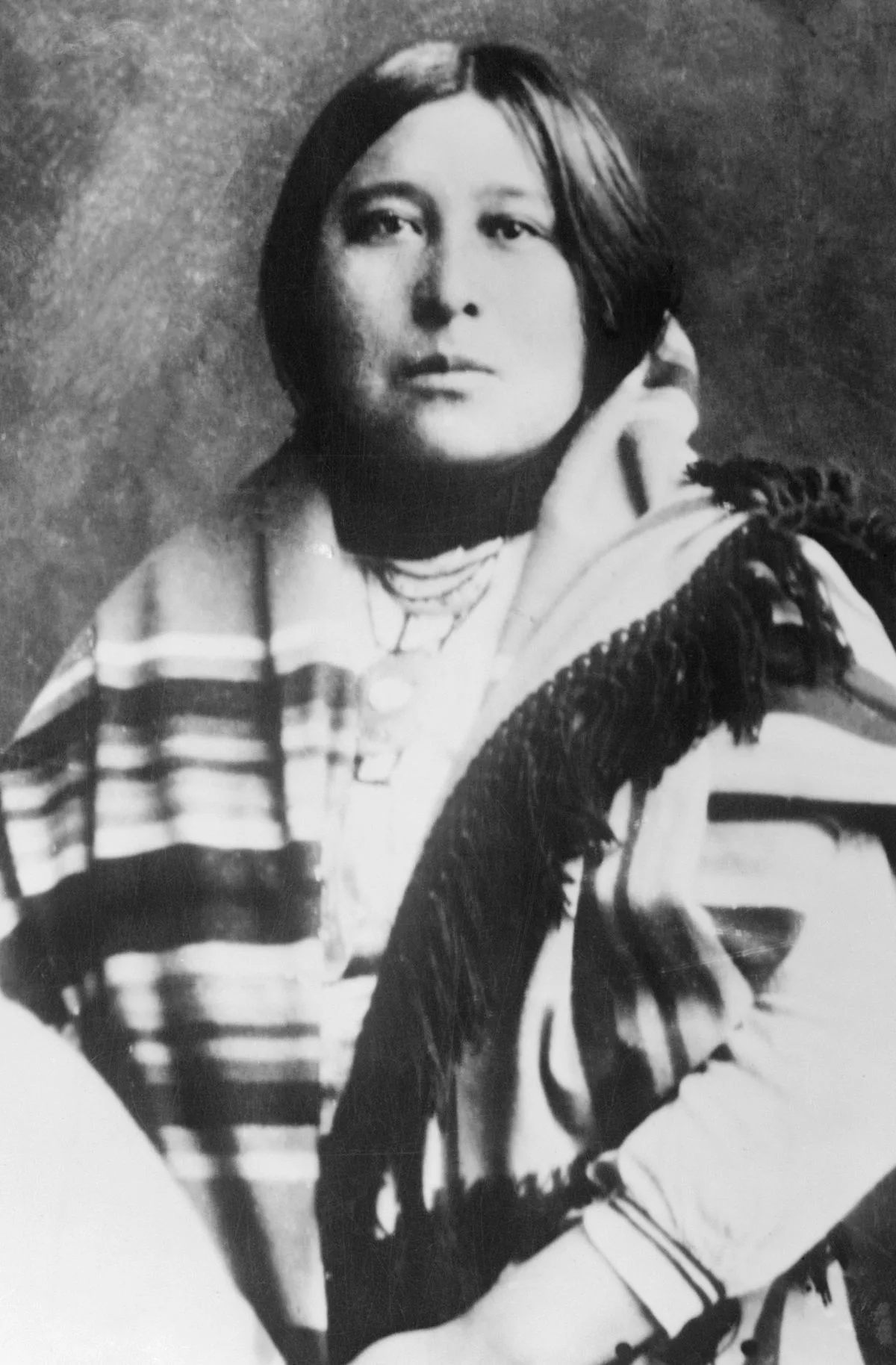



Mollie had outlived her three sisters, several cousins, and her mother. By the time White finally arrested Hale, she was being slowly poisoned — allegedly via injections directly from her doctor under the guise of administering insulin — with the apparent expectation that when she died, her family’s entire fortune would pass to Ernest Burkhart. Burkhart was fully aware of and assisted in the plot to kill his in-laws, including helping facilitate the bombing of the Smiths.
It’s unclear when Burkhart learned about his uncle’s plot. It’s a horrifying possibility that he married Mollie with the intent to orchestrate her murder. It’s also possible he learned of the plot to kill Mollie afterward and went along with it, or perhaps learned of it but then proved reluctant to carry it out; after all, this was a woman he’d been married to for decades and had three children with. The possibility he had no knowledge she was being poisoned seems remote. In the final chapters of Flower Moon, Grann offers the chilling possibility that Burkhart not only had full complicity, but had even intended for his wife Mollie and two of their children to die alongside her sister Rita in the bombing of the Smith house.
Equally unclear is whether Hale’s plot stopped with Mollie or ultimately included killing off Burkhart as well. Burkhart seemed genuinely remorseful and pleaded guilty to his role in the killing of Mollie’s sister Rita Smith, her husband Bill Smith, and their servant Nettie Brookshire. (The man who allegedly planted the bomb had died under suspicious circumstances that implicated Hale as the mastermind.) After this, Hale allegedly attempted to get one witness to kidnap and kill his nephew before Burkhart could testify against him.
Ultimately, despite multiple hung juries (whose members had been bribed by Hale’s attorney), Hale and another man, a career criminal named John Ramsey, were convicted of killing Mollie’s cousin Roan Horse, also known as Henry Roan, in an insurance scam. They were each given life imprisonment. Hale’s other nephew, Bryan Burkhart, helped facilitate the murder of Mollie’s other sister Anna Brown, but after his own trial resulted in a hung jury, he was given immunity in order to testify against the man who pulled the trigger. That man, Kelsie Morrison (whom Grann implicates in a similar plot to murder his wife and her entire family), was also convicted. Although Hale was implicated in dozens of deaths, he was only convicted for one. Both he and Burkhart were eventually paroled, and Burkhart applied for and received a pardon from the state of Oklahoma over the objections of outraged Osage.
For her part, Mollie initially supported her husband and believed in Ernest’s innocence, but after learning the full scope of his involvement in the murders, and comprehending just how much death he actively took part in, she divorced him. In 1931, she successfully sued for an end to her own guardianship and finally gained full control over the family fortune others had tried so hard to take.
It’s impossible to know the full range of crimes that Hale and his coconspirators committed. That’s due to a range of reasons. For one, records have been lost and might not have been kept well at the time. For another, Hale wasn’t the only white man in the area trying to attain access to Osage wealth via force, violence, coercion, and murder. For another, since at one point local law enforcement simply stopped investigating the murders, the total number of people murdered in the Osage Reign of Terror might never be known. In Flower Moon, Grann cites estimates in the hundreds of victims — and that’s just within the Osage community. Hale also seems to have ruthlessly orchestrated the murders of dozens of people who either investigated the murders, helped him commit them, or had knowledge of them.




The specter of death seems to have been all but expected during this period. Even a cursory look into the murders leads immediately to unexpectedly dark places — like the time Hale somehow legally acquired the inheritance of a 12-year-old boy, Charles Bigheart, who suddenly passed away under unknown circumstances, just five years before his father George was suspiciously poisoned to death, allegedly by Hale. Grann, in researching his book, seemed unable to help but stumble across more murders committed by more people — one, a banker in league with Hale, was suspected by FBI agents but never prosecuted; another woman likely murdered her husband for his headright and later narrowly escaped being murdered herself. The earliest victim Grann encountered was bludgeoned to death in 1918 by friends who later posed as her family members in order to access her accounts. The most recent victim he learned about was allegedly poisoned in 1931.
Once Grann began looking at specific white men who had multiple guardianships entrusted to them, he realized that many of them seemed to be systematically offing their charges without an apparent second thought. Some simply denied their wards access to health care and let them die. One wealthy woman was held captive and tortured by her husband until the government interceded, as part of yet another alleged town conspiracy to take her wealth. Many guardians seemed to have no qualms about killing children in order to knock off potential obstacles to the prize. And countless members of white society were engaged in helping the guardians make such deaths appear nominally unsuspicious.
“Virtually every element of society was complicit in the murderous system,” Grann ultimately concludes after taking in the sheer scope of the killings, “a vast criminal operation that was reaping millions and millions of dollars.” The social system that had begun as an ecosystem of greed had evolved into an ecosystem of death, reaping tragedy and trauma that still haunts the Osage and their descendants. The laws around headrights have changed, but they are still fraught legal subjects, though the Osage wealth has long since dried up, literally, alongside the depleted oil fields. And although the deaths of Indigenous peoples living in the US may not be organized by the steady hand of a single man like William Hale, they still face far higher death rates with lower rates of criminal investigations and prosecutions than white Americans. Missing and Murdered Indigenous Women has become a grim acronym in the annals of criminal justice due to the need for increased awareness of such cases.
The Osage murders illustrate something profoundly dark about the lie of American identity. The trope is that anyone can find success and happiness — that there’s something mythic and magical about “American” ambition and success. Throughout the 19th and early 20th centuries, the government’s approach to Indigenous Americans was to mold them into docile citizens via forced boarding school attendance (Roan Horse, later killed by Hale, was forced to change his name at one such school), forced religious conversions, and the systematic destruction of Indigenous American cultures. The lie that Indigenous peoples were fed as they were forced to assimilate into white culture was that once they had done so successfully, they would be rewarded with greater freedom and autonomy; they would receive their chance to participate in the American dream.
Yet as Goodskin pointed out to Harper’s in 1920, that promise, always hollow, completely vanished as soon as actual independence and autonomy were within reach.
“In the old days, before we had money, it was easy enough,” he said, describing the plight of the Osage who had a guardian. “All you had to do was not get drunk. But now your good behavior has nothing at all to do with it. Your money draws ’em and you’re absolutely helpless.”
In other words, after having fully disenfranchised Indigenous Americans, there was never going to be a version of the “model” Indigenous American that white society could actually tolerate. The discovery of oil on Osage land is what the American dream is supposedly all about. It should have afforded the Osage power, freedom, and agency alongside all that cash.
Instead, at the very moment they should have attained everything they were promised, they had less control over their own lives — and deaths — than ever.


